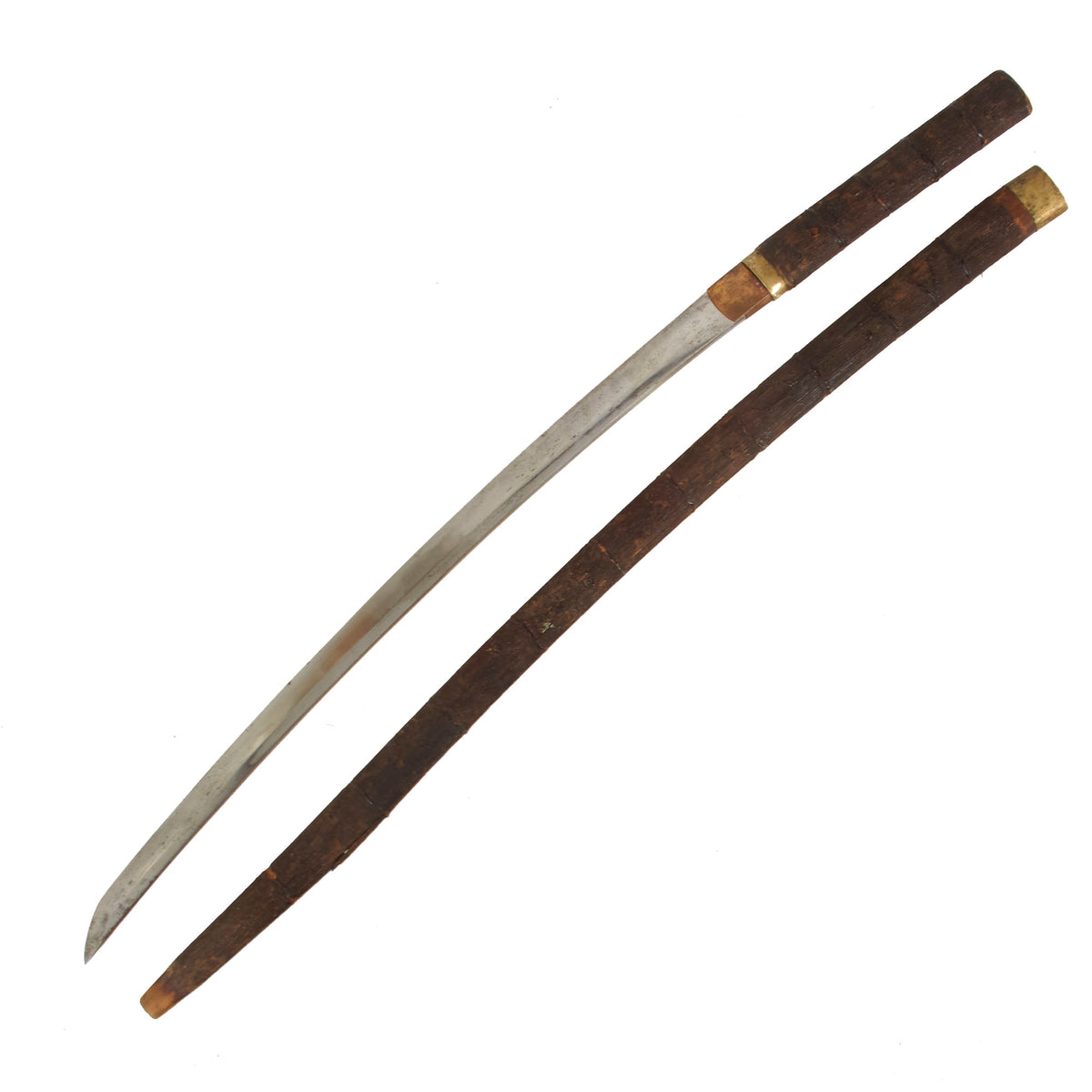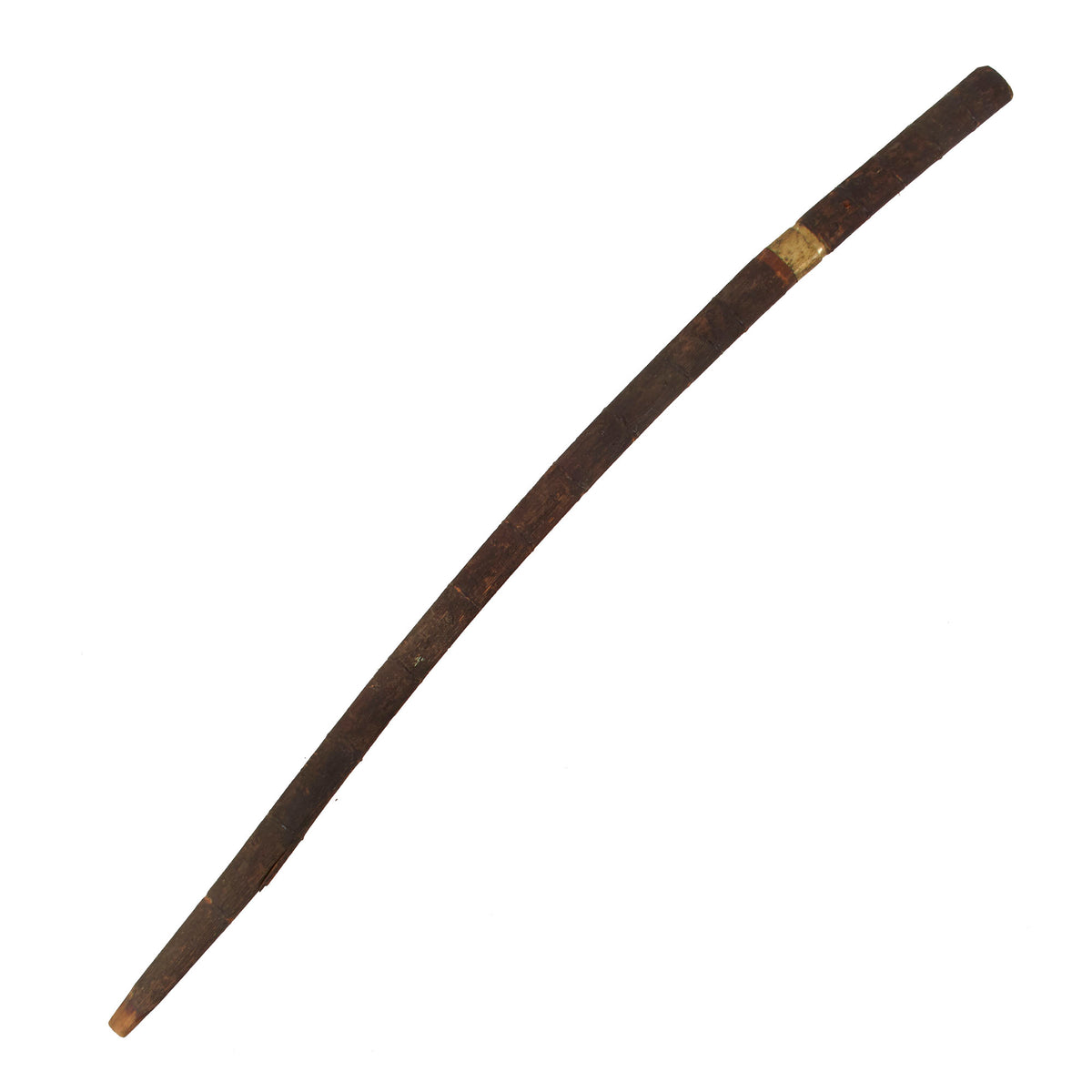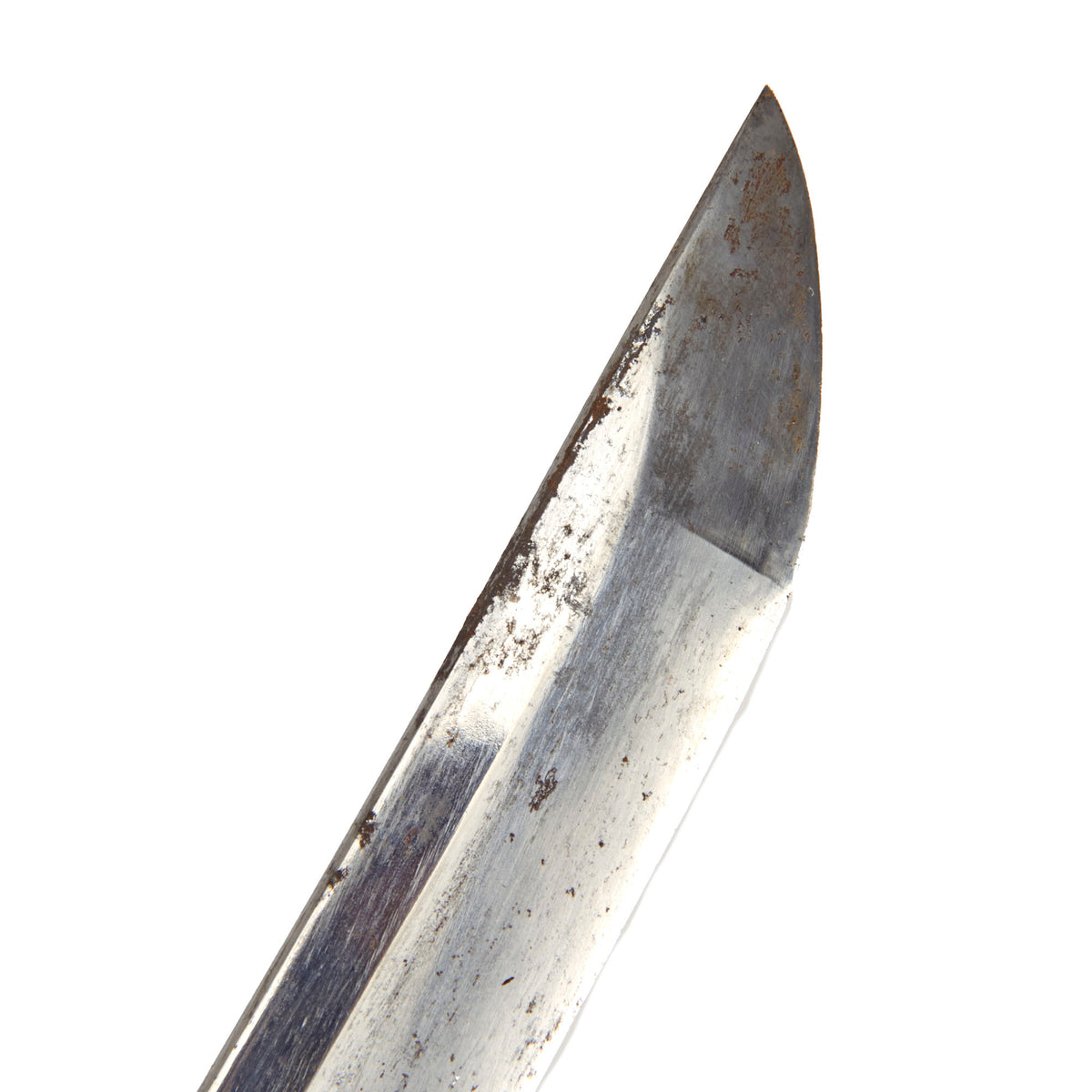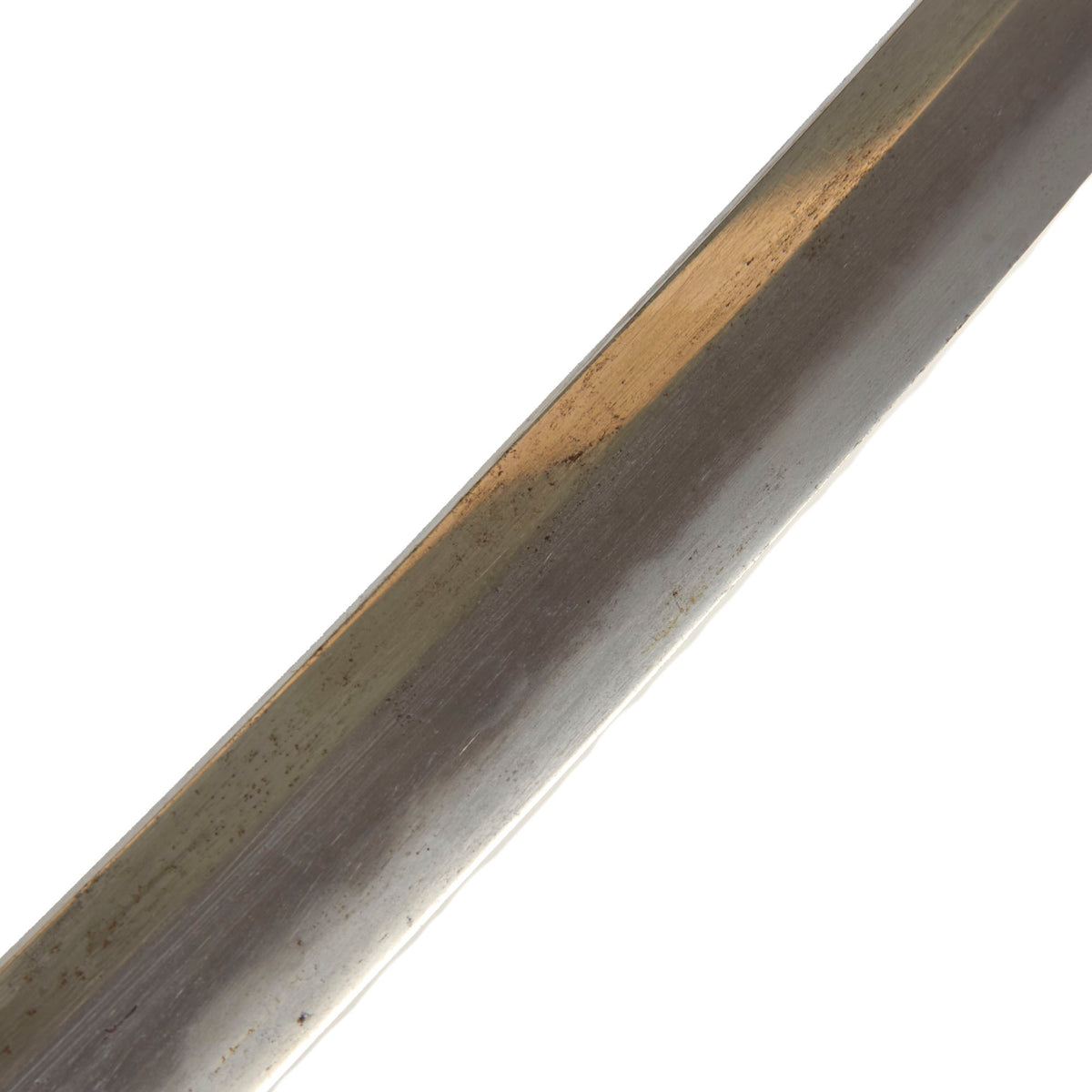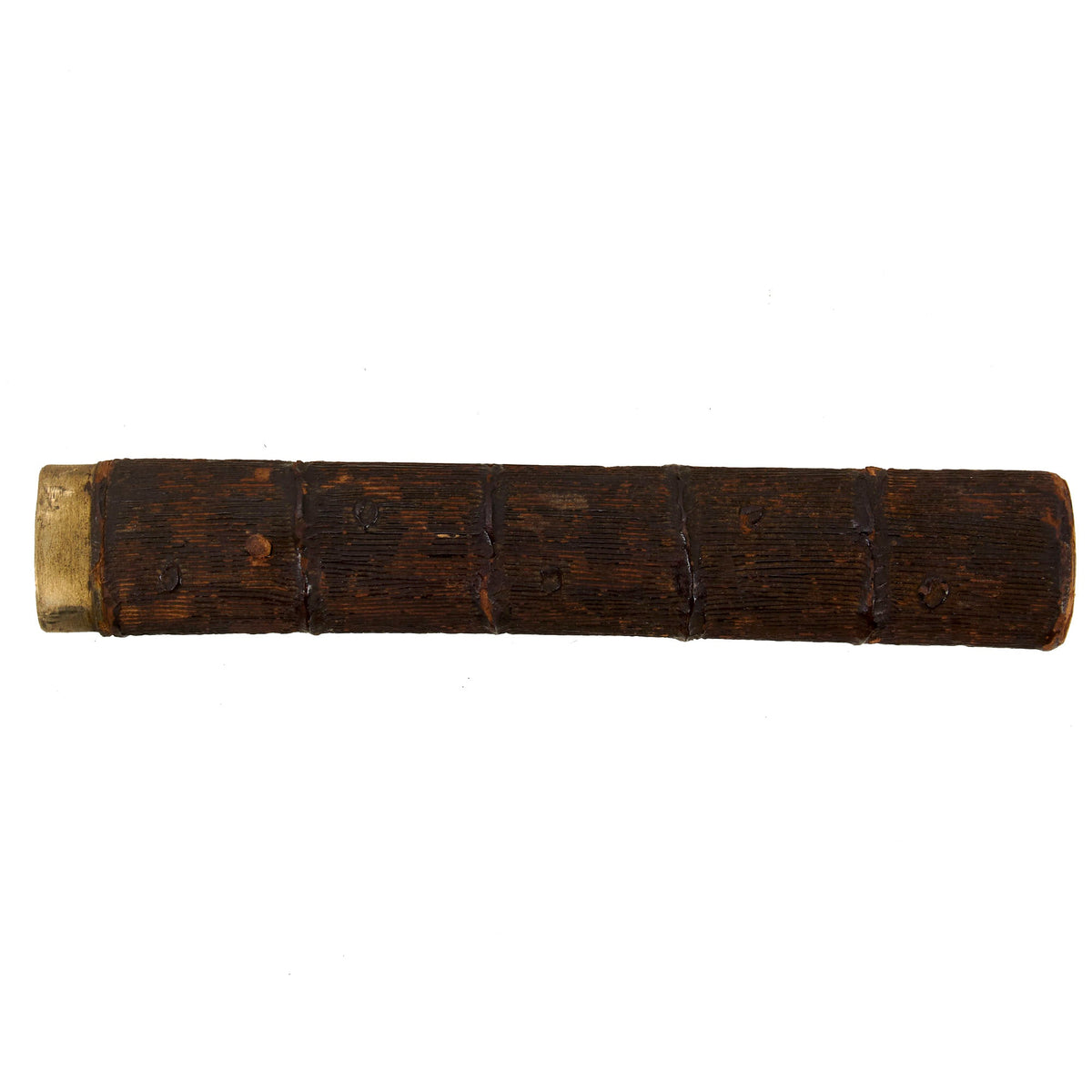Original 18th Century Edo Period Japanese Handmade Wakizashi Short Sword in Shikomizue Sword Cane Mountings Original Items
$ 1.295,00 $ 323,75
Original Item: Only One Available. Wakizashi (脇差 “side inserted / companion sword”) is a general term for a sword with an edge between one and two shaku long (30 cm and 60 cm), predominantly made after 1600. Generally it is the short blade that accompanies a katana in the traditional samurai daisho pairing of swords, but may be worn by classes other than the samurai as a single blade, also worn edge up as the katana.
This great example dates from the Edo period (江戸時代, Edo jidai) or Tokugawa period (徳川時代, Tokugawa jidai) of Japanese history. This is the period between 1603 and 1867, when Japan was under the rule of the Tokugawa shogunate and the country’s 300 regional daimyo. As the blade length is close to that of a Katana, and the blade is the “Shinogi-Zukuri” shape, some would term this an “O-Wakizashi”.
The blade on this wakizashi has most likely been remounted several times, as was common for Japanese blades. This has made the file marks (yasurimi) on the tang faint, and given it a lovely patina. There is also some patinated oxidation, a sign of great age. As there is no maker name on the tang, this blade is considered 無名 (mumei), or “anonymous”.
As a first, the KOSHIRAE (mountings) for this blade are SHIKOMIZUE style, often called a “Sword Cane”. The Kanji for this (仕込み杖) mean “placing inside a cane” in English, and typically these were lower quality straight blades. This example however has a true curved handmade blade, forged in the traditional manner using Tamahagane (玉鋼) steel.
The blade has the following period correct features:
– Folded steel blade (fold lines are evident on the spine and body of the blade)
– hole (mekugi-ana) in the tang is punched and not drilled
– blade has a temper line (hamon), running the entire edge of the blade
– Blade wounds (kizu) or lamination artifacts are present on the blade. Both ware (lamination lines) and fukure (carbon pits) are visible, only possible on traditionally made blades.
– Blade shows grain (hada) in the body (ji) of the blade, produced by the layering in the steel.
Offered in very good condition, the blade is still quite sharp and has a great look. There are just a few very minor dents on the edge, with just a bit of scuffing in areas. Overall polish is still in very good condition, however the blade was definitely not oiled properly for a time, which allowed speckled oxidation to appear throughout the surface. There are also some marks from the scabbard and past cleaning, however the aspects of the blade are still easily visible for the most part. Blade length is approximately 21 1/4 inches and overall length 29 5/8 inches. The wakizashi has a traditionally handmade blade with a Futsu 普通 (regular) Nakago (tang) and a Haagari (asymmetrical rounded) nakago-jiri
The blade has a proper kissaki (tip) with a clear yokote (division between body and tip) and partial boshi (tip temper line). The main edge Temper line (hamon) is fully visible, and is a very attractive NOTARE MIDARE (湾れ乱れ) – irregular wave like shape with lots of internal activity. Along the transition there are clear NIE crystals visible, with cloudy areas of NIOI in the body of the hamon. There also are some KINSUJI and SUNAGASHI aspects visible, making this really a great blade. The body of the blade (JI) also shows HADA (肌 -grain), which is the MASAME (柾目 – straight) pattern. This is definitely a blade that would really shine if given a proper polish by a Togishi. The sword has a copper Habaki (blade collar), which is typical of the Edo period.
The SHIKOMIZUE fittings are lovely, and very effectively make it look like a cane. It does look like there was an end fitting at some point, now missing. It looks like the texture on the exterior is all hand applied to make it look like a piece of wood. We had considered it possible that it was real bark, but it just matches the blade too well. The textured lacquer is very well retained, with the main issue being that the scabbard (saya) has split along the seams on both sides, though this could probably be repaired.
A very nice Edo Period O-wakizashi with a lovely blade, complete with rare “sword cane” fittings and ready to restore display!
Specifications:
Blade Length: 21 1/4″
Blade Shape: Shinogi-Zukuri
Overall length: 29 5/8“
Scabbard Length: 28 1/8″
It has been over one thousand years ago that the art of making swords appeared in Japan. The swordsmiths of the time may not have known it but they were creating a legendary sword. The Samurai sword has seen combat in many battlefields. From the early days of the Samurai warrior to the fierce battles in the South Pacific during WWII.
Each hand-made Japanese blade (日本刀 – Nihonto) is unique because it is forged from multiple pieces of folded steel stock. A tremendous amount of work is dedicated to creating these pieces. They were an instrument of war as much as a beautiful artifact to adorn a room.
The traditional Japanese blade and mountings have grown to be one of the most highly desired military antiques.
Fast Shipping with Professional Packaging
Thanks to our longstanding association with UPS FedEx DHL, and other major international carriers, we are able to provide a range of shipping options. Our warehouse staff is expertly trained and will wrap your products according to our exact and precise specifications. Prior to shipping, your goods will be thoroughly examined and securely secured. We ship to thousands clients each day across multiple countries. This shows how we're dedicated to be the largest retailer on the internet. Warehouses and distribution centres can be located throughout Europe as well as the USA.
Note: Orders with more than one item will be assigned a processing date depending on the item.
Before shipping before shipping, we'll conduct a thorough inspection of the items you have ordered. Today, the majority of orders will be delivered within 48 hours. The delivery time will be between 3-7 days.
Returns
The stock is dynamic and we cannot completely manage it because multiple stakeholders are involved, including our factory and warehouse. So the actual stock may alter at any time. It's possible that you may not receive your order once the order has been made.
Our policy is valid for a period of 30 days. If you don't receive the product within 30 days, we are not able to issue a refund or an exchange.
You can only return an item if it is unused and in the same state as the day you received it. You must have the item in its original packaging.
Related products
Uncategorized
Uncategorized
Uncategorized
Uncategorized
Uncategorized
Uncategorized
Uncategorized
Uncategorized
Uncategorized
Uncategorized
Uncategorized
Uncategorized
Uncategorized
Uncategorized
Uncategorized
Uncategorized
Uncategorized
Uncategorized
